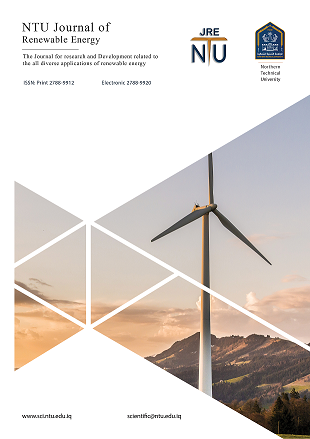Aheat transfer and fluid flow characteristics in a TBHE based on constructal design : An overview
DOI:
https://doi.org/10.56286/ntujre.v4i1.428Abstract
With the beginning of the industrial revolution in the eighteenth century, ICE, refrigeration equipment and power stations developed. All of the above devices use TBHE. The important thing is the recent increase in energy demand, which led researchers to find optimal solutions to save the largest amount of energy. The objective of this review can be summarized in the research published in the field of TBHE of all kinds. In order to improve the performance of the TBHE, two basic conditions must be met, the first is to increase the CHTC, and the second is to reduce the PD across the HE. In order to reach this goal, many influential variables must be studied, including pipe diameters and shapes, vertical and horizontal distances, fins shape, and installation method. In addition to the arrangement of the tubes through the TBHE. It was in the form of IL or staggered, the type of flow that was stratified or turbulent. The most important variables affecting on the performance of HEs can be summarized in general. The shape of the pipes had a greater urgency in the process, as the flat pipes had better performance than the circular TBHE. Both the PD and the CHTC are a function of the Reynolds number, as both increase with the increase in the Reynolds number. Therefore, studies in this field must be intensified to obtain the optimal design TBHE, taking into account all the above variables.
Downloads
Published
Issue
Section
License
Copyright (c) 2023 NTU Journal of Renewable Energy

This work is licensed under a Creative Commons Attribution 4.0 International License.








